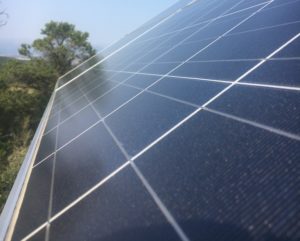Renewables and Ellingson
As we update and ugrade our grid infrastructure to rely more and more on renewables (i.e. wind and solar power), Ellingson Companies found an important role in helping make the connections necessary for a new renewables based grid.

Large-scale renewables projects require lots of subsurface infrastructure.
At the mega- or giga-watt scale, a renewables project requires a staggering number of PV panels or wind turbines. To supply their clean, green power to the grid, they each require a physical connection to that grid. That means hundreds of thousands of feet of conduit for a single project. And most designs call for burying those lines underground.
In addition to diminished aesthetic appeal, above ground lines bear the disadvantage of higher maintenance costs and increased vulnerability to severe weather damage.
Ellingson’s Diverse Capabilities: Economic and Flexible
Traditionally you might assume that underground conduit needs to be installed with open-cut trenching. However, Ellingson Water Management has used plowing to install agricultural drain tile for over 45 years. We’ve since found the trenching method to be incredibly efficient at installing all sorts of different underground infrastructure.
In concert with our HDD capabilities, Ellingson provides renewables contractors with a versatile set of solutions for installing sub-surface conduit. When applicable, Ellingson uses plowing to install quickly and efficiently most of the lines that traverse open terrain.
However, when the lines need to cross sensitive above-ground infrastructure like roads, the HDD equipment and crews quickly fill in to keep the project moving smoothly.
Switching our energy dependence to renewables involves more than just putting up a bunch of solar panels or wind turbines. To put that energy to use requires physically connecting all those panels and turbines to the grid.
While HDD plays a crucial role in some of those connections, Ellingson’s other service lines help keep costs down and limit the amount of open cut trenching necessary.
Tags: green energy, green grid, grid infrastructure, renewables, solar power, sustainable energy, trenchless conveyance lines. directional drilling, underground utilities, wind power